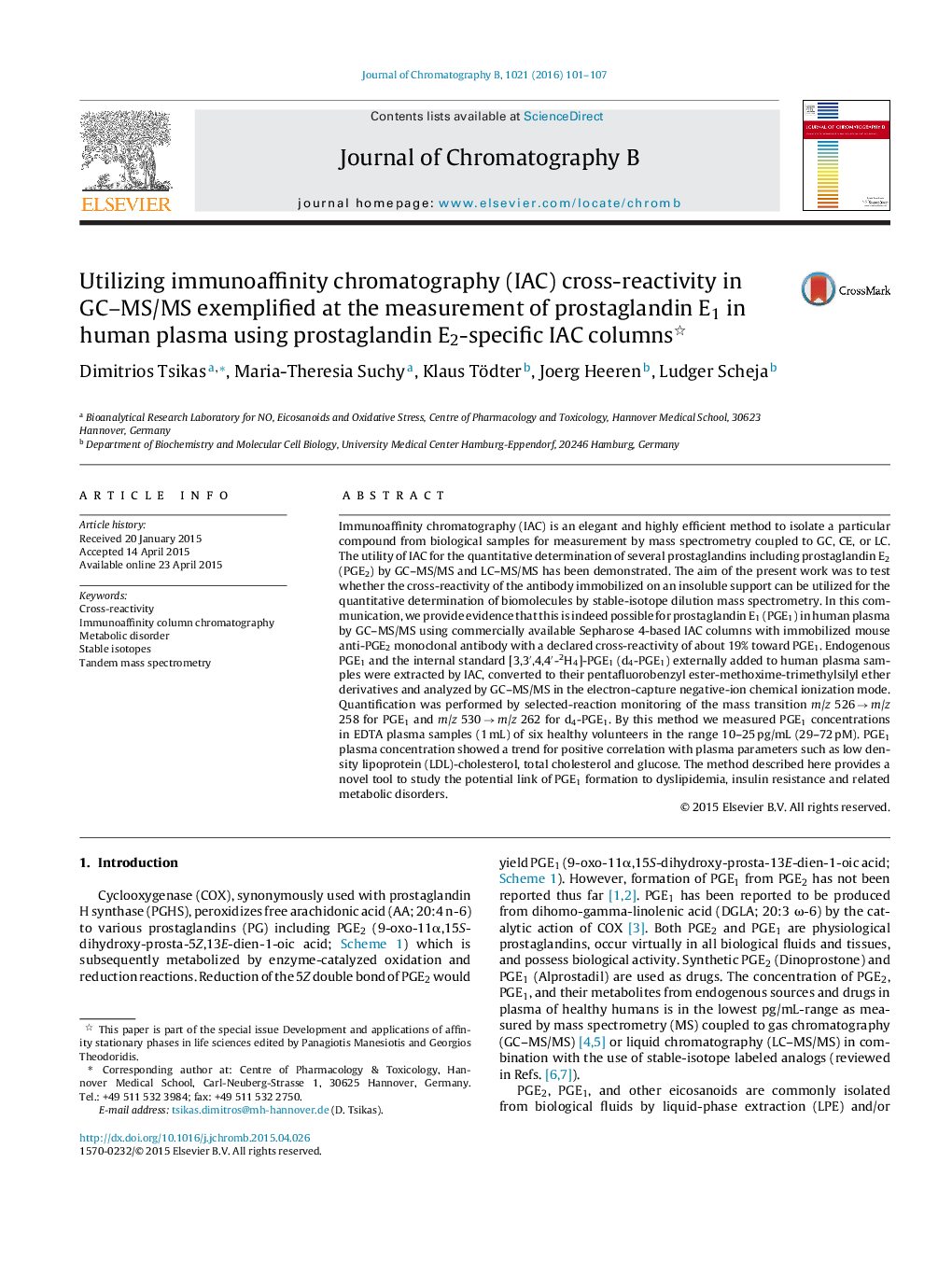| Article ID | Journal | Published Year | Pages | File Type |
|---|---|---|---|---|
| 1211938 | Journal of Chromatography B | 2016 | 7 Pages |
•Prostaglandin E1 (PGE1) is produced from DGLA by cyclooxygenase.•PGE1 was quantitated in human plasma by GC–MS/MS.•PGE1 was extracted by IAC-PGE2 (cross reactivity 18%).•PGE1 was found to correlate with DGLA.
Immunoaffinity chromatography (IAC) is an elegant and highly efficient method to isolate a particular compound from biological samples for measurement by mass spectrometry coupled to GC, CE, or LC. The utility of IAC for the quantitative determination of several prostaglandins including prostaglandin E2 (PGE2) by GC–MS/MS and LC–MS/MS has been demonstrated. The aim of the present work was to test whether the cross-reactivity of the antibody immobilized on an insoluble support can be utilized for the quantitative determination of biomolecules by stable-isotope dilution mass spectrometry. In this communication, we provide evidence that this is indeed possible for prostaglandin E1 (PGE1) in human plasma by GC–MS/MS using commercially available Sepharose 4-based IAC columns with immobilized mouse anti-PGE2 monoclonal antibody with a declared cross-reactivity of about 19% toward PGE1. Endogenous PGE1 and the internal standard [3,3′,4,4′-2H4]-PGE1 (d4-PGE1) externally added to human plasma samples were extracted by IAC, converted to their pentafluorobenzyl ester-methoxime-trimethylsilyl ether derivatives and analyzed by GC–MS/MS in the electron-capture negative-ion chemical ionization mode. Quantification was performed by selected-reaction monitoring of the mass transition m/z 526 → m/z 258 for PGE1 and m/z 530 → m/z 262 for d4-PGE1. By this method we measured PGE1 concentrations in EDTA plasma samples (1 mL) of six healthy volunteers in the range 10–25 pg/mL (29–72 pM). PGE1 plasma concentration showed a trend for positive correlation with plasma parameters such as low density lipoprotein (LDL)-cholesterol, total cholesterol and glucose. The method described here provides a novel tool to study the potential link of PGE1 formation to dyslipidemia, insulin resistance and related metabolic disorders.
